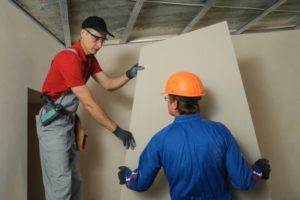A Homeowner’s Guide to Drywall Installation
All modern homes are constructed using drywall, a popular, fire-resistant material that is made from a gypsum-based plaster and paper. Unlike its predecessors, drywall is easier to install and repair, and it’s much lighter construction material. If you have the skillset, you can install drywall yourself—that is, with the help of a friend or two. Otherwise, hire a competent contractor who specializes in drywall service and installation, custom texturing, and drywall repair in Pleasanton.
How Drywall Is Basically Installed
Drywall, also known as plasterboard or gypsum board, is manufactured in sheets of varying sizes and depths. These sheets are generally nailed directly to the wooden framing of homes or wooden support structures, which means that walls can be constructed within days. Plaster, on the other hand, requires the support of a latticework of thin, narrow strips of wood called laths. Plaster walls need time to cure, often taking weeks to dry.
Types of Drywall
There are several types of drywall on the market today, each with its own positive attributes. For instance, greenboard drywall is water resistant and can be used in areas, such as basements and showers, where moisture levels are high. Greenboard is covered by special paper that resists water rather than being impervious to it. Blueboard is manufactured with a unique surface that allows plaster to be applied over it. Unlike standard drywall, blueboard should not be painted until a plaster veneer has been applied over it. Cement board is made from cement and reinforcing fibers, forming a sheet similar to standard drywall. This material is highly resistant to water and can be used in showers and other places where water is present. Oftentimes, it’s covered with tile. Finally, Sheetrock, like Kleenex, is the trade name for a specific brand of drywall. Homes in the United States are usually constructed using this brand of drywall.
Drywall Texture
Once drywall is up, seams need to be tapped together and drywall mud needs to be applied. After a few coatings of mud, you can decide whether or not you want to add texture to your walls. A custom-texturing expert should really do this job because it requires finesse and skill.

